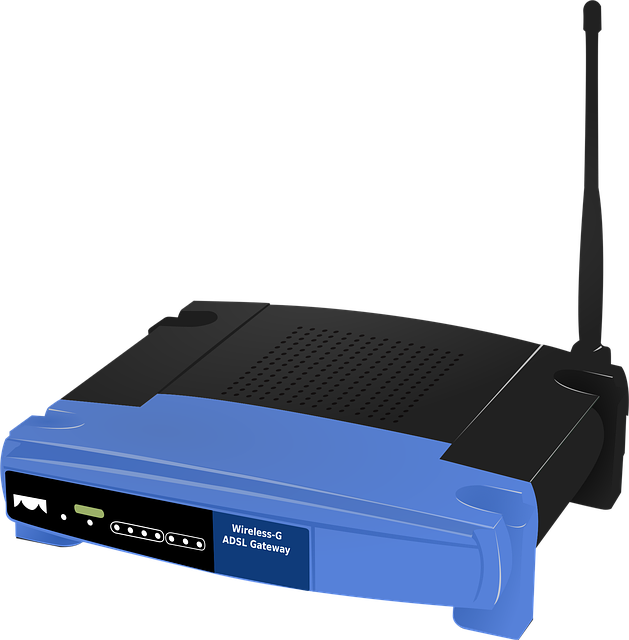Structured cabling for WAPs is vital for deploying and supporting next-gen wireless technologies like 5G and Wi-Fi 6, offering scalability, high-speed data transfer, and future-proofing through compatible high-performance cables, robust connectivity, and redundancy. Regular maintenance and strategic upgrades ensure optimal performance and network uptime while aligning with evolving standards.
In today’s digital era, future-proof structured cabling is crucial for supporting next-gen wireless technology, such as advanced Wi-Fi (WAPs). As wireless standards evolve, understanding and implementing robust cabling infrastructure becomes increasingly vital. This article delves into the key aspects of structured cabling for WLAN deployment, design considerations to ensure longevity, and best practices for maintenance and upgrades. By exploring these topics, organizations can stay ahead of the curve in terms of network performance and adaptability.
Understanding Next-Gen Wireless Standards
Next-gen wireless technology is characterized by a suite of evolving standards aimed at enhancing connectivity speed, reliability, and capacity. This includes the widespread adoption of 5G networks, promising ultra-fast data transfer rates and low latency, as well as Wi-Fi 6 (802.11ax), which offers significant improvements in network efficiency and performance compared to previous versions. Structured cabling plays a pivotal role in supporting these advancements, especially with the increasing demand for Wireless Access Points (WAPs).
Structured cabling systems provide a robust foundation for deploying WAPs by offering reliable, high-speed connections. The use of fiber optic cables or Category 6a/7 twisted pair wires ensures the necessary bandwidth and signal integrity to support next-gen wireless standards. This future-proof approach allows businesses to invest in cutting-edge technology today, knowing their infrastructure can accommodate tomorrow’s innovations without significant upgrades.
The Role of Structured Cabling in WLAN Deployment
Structured cabling plays a pivotal role in the successful deployment of Wireless Local Area Networks (WLANs), especially with the advent of next-generation wireless technologies. In today’s digital era, where wireless connectivity is ubiquitous and constantly evolving, reliable and efficient data transmission is paramount. Structured cabling provides the foundation for this seamless communication by offering a robust backbone that connects access points (APs) or Wireless Access Points (WAPs) to the core network.
By employing structured cabling for WAPs, organizations ensure optimal performance and scalability of their WLAN infrastructure. This standardized approach allows for easy integration of new APs, supports high-speed data transfer, and facilitates efficient LAN segmentation. Moreover, structured cabling’s ability to handle increasing bandwidth demands ensures that today’s and tomorrow’s wireless technologies can co-exist harmoniously within the same network, ensuring a future-proofed environment for evolving WLAN deployments.
Design Considerations for Future-Proof Cabling Systems
When designing future-proof structured cabling systems, particularly for supporting next-generation wireless access points (WAPs), several key considerations come into play. The primary focus should be on adaptability and flexibility to accommodate evolving technologies and standards. This involves selecting high-performance cables that can handle increased data rates and reduced latency, ensuring they are compatible with emerging wireless protocols such as 5G and Wi-Fi 6.
Additionally, robust connectivity and reliability are paramount. Using industrial-grade connectors and switches designed for harsh environments guarantees consistent performance over time. Redundancy in the cabling infrastructure is another important aspect, enabling failover mechanisms to maintain network uptime even if individual components fail. These design choices not only future-proof the structured cabling system but also ensure optimal wireless network performance and reliability.
Best Practices for Maintaining and Upgrading Cabling Infrastructure
Maintaining a robust and future-ready cabling infrastructure is essential as we embrace the next generation of wireless technology. For structured cabling designed to support Wireless Access Points (WAPs) and their high-performance requirements, regular upkeep is vital. This includes visually inspecting cables for any signs of damage, wear, or fraying, especially in high-traffic areas. Implementing a robust cleaning regimen with appropriate tools can prevent signal interference caused by dust, dirt, or debris accumulation on connectors and interfaces.
Upgrading your cabling infrastructure should be a strategic process. Identify specific needs based on your wireless technology goals, such as supporting faster speeds or increasing the number of connected devices. When upgrading, consider future expansion by choosing versatile structured cabling solutions that can accommodate evolving standards and protocols. Regularly updating hardware and software associated with your WAPs ensures optimal performance and security, aligning with best practices for maintaining a cutting-edge network infrastructure.
Future-proofed structured cabling is essential for supporting next-generation wireless technologies, such as advanced Wi-Fi (WLAN) standards. By understanding the evolving requirements of these technologies and implementing robust design considerations, organizations can ensure their cabling infrastructure remains relevant and efficient. Regular maintenance and strategic upgrades are vital to maintaining optimal performance, enabling seamless integration of new devices like wireless access points (WAPs), and ensuring a reliable network environment for years to come.
